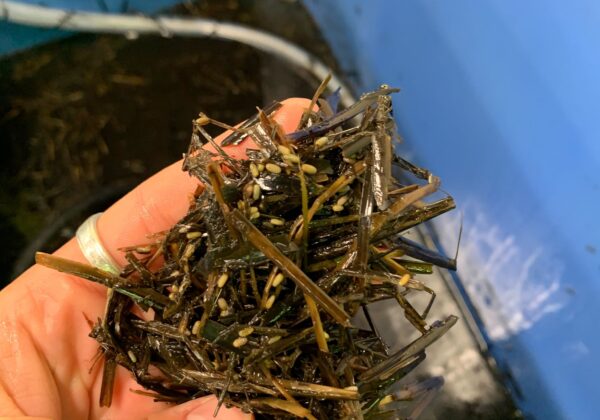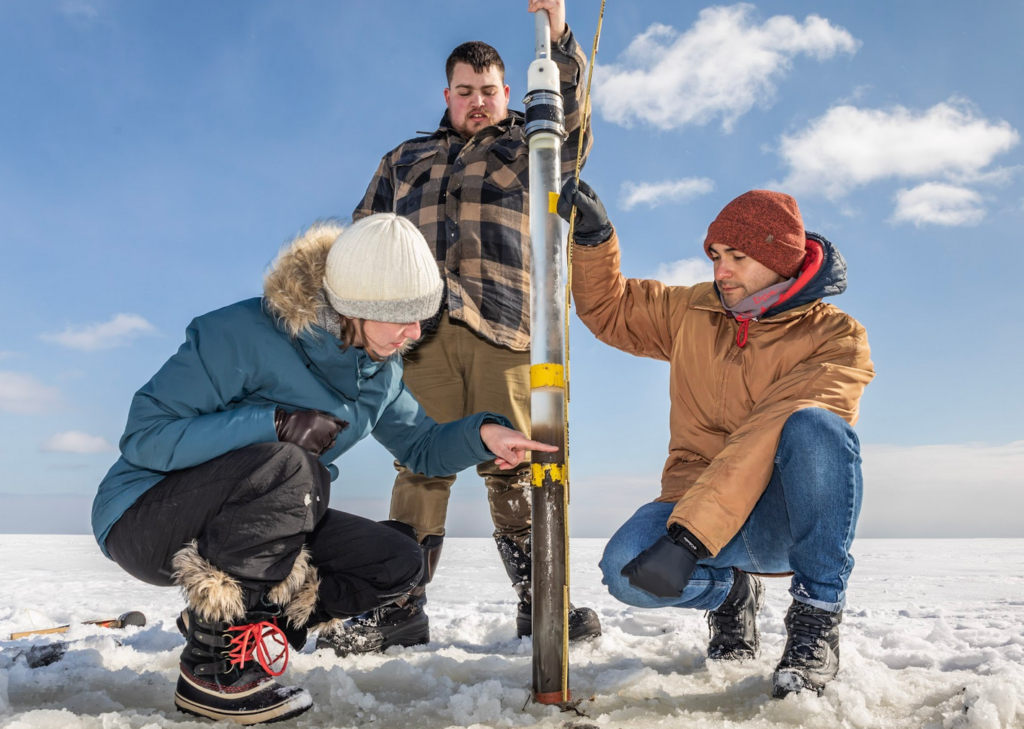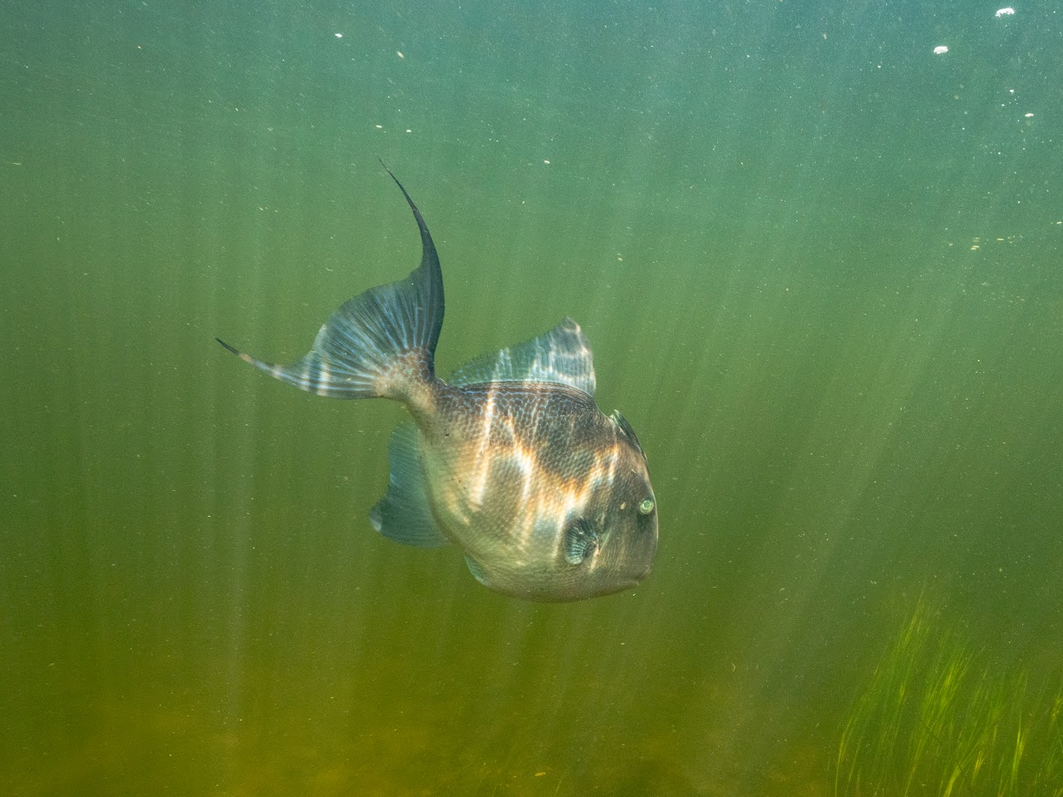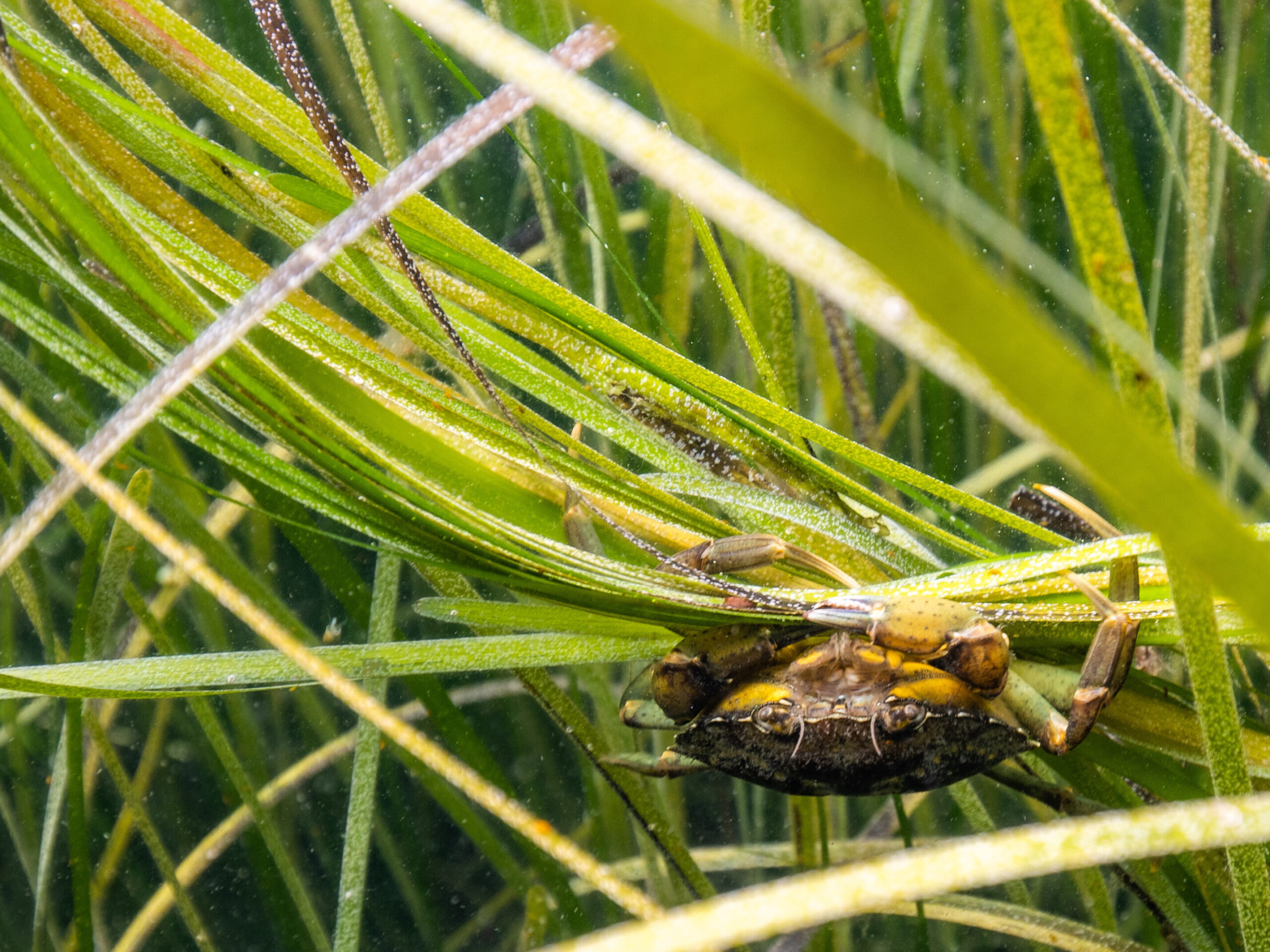Dedicated research underpins and supports all of CERI’s conservation and restoration efforts. We have a dedicated team of Marine Biologists and Oceanographers studying the impacts of climate change on eelgrass meadows and how we can restore them in a climate-smart and knowledge based way!
Our research focuses on three distinct areas
- Gaining knowledge to support restoration
- Learning about blue carbon in Nova Scotia
- Understanding the role of eelgrass for biodiversity and cultural efficacy
We are combining our scientific research with traditional Indigenous knowledge and approaching conservation through both lenses. This approach is known as Two-Eyed Seeing or Etuaptmumk and leverages the individual strengths of both ways of learning.
Gaining knowledge to support restoration
Eelgrass reproduces in two ways: asexually (by growing new shoots along their root system) and sexually (by flowering and producing seeds, much like plants on land!)
For our restoration work, we take advantage of both methods of reproduction by utilizing both mature plants and seeds. We keep a close eye on eelgrass meadows in the spring and early summer to monitor the flower and seed development. We harvest seeds as soon as they develop and then store them under set conditions in Dalhousie’s Aquatron facilities. Here we control the temperature and salinity to optimize germination rates and control when the seeds mature! The Aquatron provides us the flexibility to choose when we replant.
For more information on our work with the Aquatron, check out our page here.
We are currently studying which methods of replanting work best for Nova Scotia waters and conditions. This includes comparisons of different planting methods (using grown plants versus seeds) as well as examining density of replanting required for quick growth of a new eelgrass meadow.

Experiments at Dalhousie Aquatron
The Aquatron facility at Dalhousie University provides us with the perfect setting to grow eelgrass under controlled…
View ProjectLearning about blue carbon in Nova Scotia
Eelgrass, like all seagrasses, is known as a nature-based solution to climate change due to its incredible ability to store blue carbon. Some other ecosystems to keep in mind when when thinking about blue carbon storage are mangroves, kelp forests, salt marshes, bogs, and fens!
Eelgrass captures carbon from the water column and stores it in the sediment through its root system through a process called carbon sequestration. If an eelgrass meadow is undisturbed, the carbon is pushed deeper and deeper down into the sediment, ultimately removing it from the global carbon cycle for centuries to millenia!
However, not much is known about the ability of eelgrass meadows around Nova Scotia to store blue carbon. Our team is taking sediment core samples from eelgrass meadows from all around the province to better understand how rich in carbon our eelgrass beds really are. This knowledge will help us estimate how much carbon might be released should our eelgrass beds be disturbed or disappear!



Understanding the role of eelgrass for biodiversity
Eelgrass is one of the most biodiverse ecosystems along the Canadian North Atlantic Coast, home to hundreds of different species during various life stages! Some of these species are commonly known such as lobster, crabs, flatfishes, snails, and sea stars. Kataq (American eel) are also commonly spotted in eelgrass and are significant to Mi’kmaw culture, community, and economy. Other species you might not know rely on eelgrass are Atlantic Cod, flounder, pipe fish, sculpins, stickleback, and many others! It is estimated that there are about 25 different fish species that we rely on for our Atlantic Canada fishing industry that live in eelgrass during their lifetime.



Methodologies
We are using a range of different methods to study and document the species in eelgrass meadows around Nova Scotia, aiming to better understand how they use this habitat and how declining eelgrass will effect them. We lay transect lines while snorkeling to document species and use large nets that are (carefully) dragged across beds to catalogue species before releasing them back into the water.
We work with Mi’kmaw community harvesters and knowledge holders to determine best practices for this work from a Mi’kmaw perspective. Knowledge holders provide invaluable knowledge about traditional and current locations, uses and experiences with eelgrass.


To document species that are rare, very shy, or hard to observe, we use two other techniques. Using something called a BRUV (Baited Underwater Video) we can film these sneaky species without scaring them away. This baited camera is deployed for 24 hours and the footage is extracted afterwards.
We also take water samples to analyze environmental DNA (eDNA). This method relies on identifying DNA from cells shed by animals in the water around the testing site. Check out our Biodiversity page for more information!